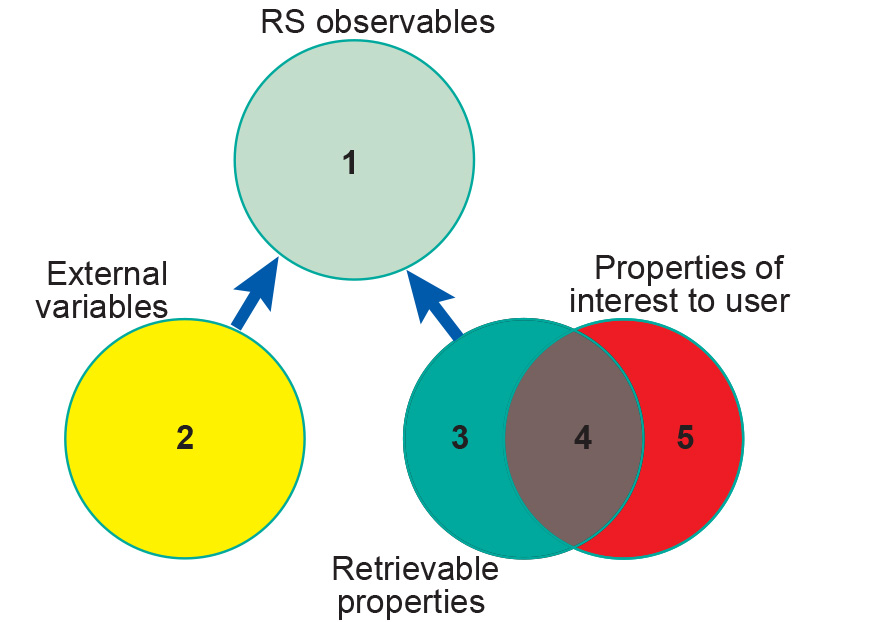Observable
Introduction
The signal with its properties that is observed by the remote sensing sensor.
Explanation
In general, remote sensing observations can be related to a number of object properties, but also to several other influences, for example atmospheric effects. On the other hand, some surface properties may have no effect at all on any of these observations.
All these considerations lead to the following categories of physical quantities within the context of remote sensing:
Category 1
Primary RS observables, i.e. TOA (top-of-atmosphere) radiances;
Category 2
External variables that influence RS observables, e.g. atmospheric variables, Sun angle, view angle;
Category 3
Surface properties not of interest to users but which do have an influence on RS observables (e.g. leaf thickness influences leaf reflectance and transmittance, but will seldom be of interest to a user);
Category 4
Surface properties of interest to users that also have an influence on RS observables (e.g. leaf area index, LAI);
Category 5
Surface properties of interest to users that have no influence on RS observables (e.g. trace pollutants in water are of great interest but they are not detectable).
Examples
The relations between observables, surface properties and user interests is summarized visually in Figure 1. For users of remote sensing data, only quantities from category 4 are really of interest. Category 5 is also of interest to users, but undetectable by RS techniques. These quantities can only be measured by other means. Categories 2 and 3 have an impact on the observations, but are not of interest to users. Nevertheless, it is necessary to take them into account, since the observations are sensitive to these factors. Ignoring them might lead to an incorrect interpretation of the observed data.

A complete observation model will describe the relations between quantities of categories 2, 3 and 4, on the one hand, and the quantities from category 1 on the other. Most radiative transfer models are, however, not complete, as they describe only radiative transfer in particular medium, such as water, soils, plant leaves, vegetation canopies or the atmosphere. Nevertheless, a complete observation model can be constructed by linking several sub-models together. This is not yet common practice, but is, nevertheless, strongly recommended since conclusions that are based on the interpretation of RS data with only one sub-model may not be reliable.
Finally, it should be noted that division over the five categories is not fixed but, rather, depends on the particular remote sensing techniques applied. For instance, object height has no direct effect on passive RS observations, but it can be measured using active techniques such as laser altimetry. Besides, which properties are of interest to the user is strongly discipline and application dependent.
Synonyms
RS observable
Outgoing relations
- Observable is used by Observation model
Incoming relations
- Retrievability is related to Observable